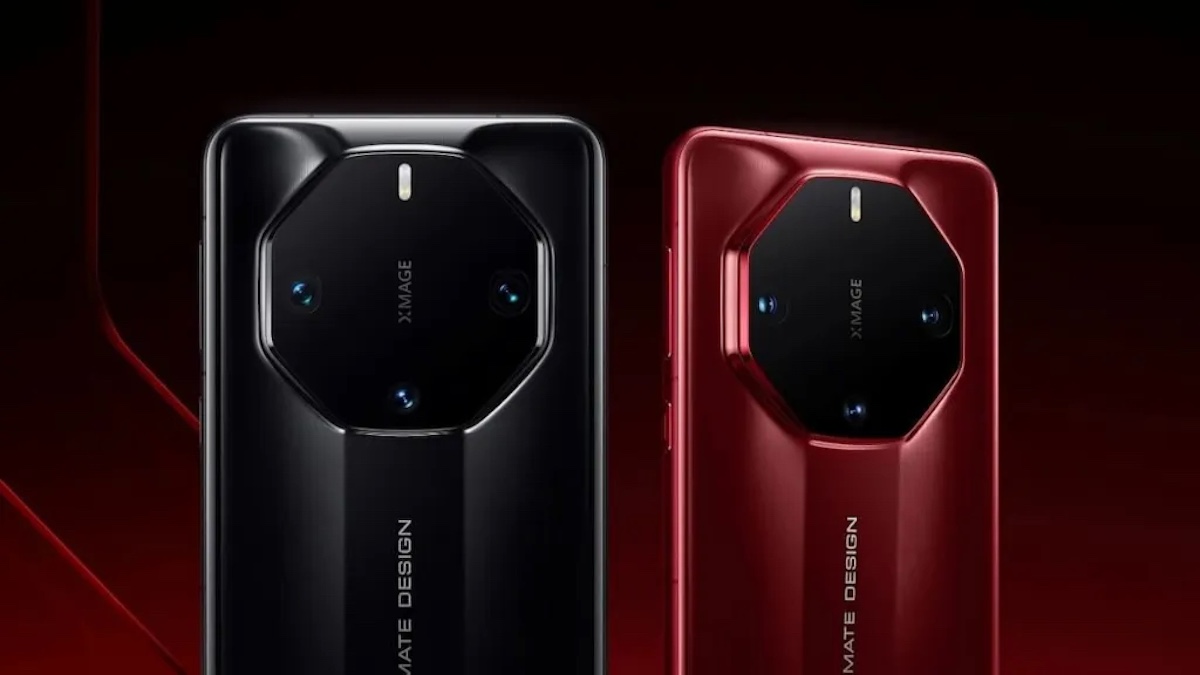
China’s Huawei Technologies is set to launch its Mate70 flagship smartphone on November 26, a milestone in its sanctions-induced quest for self-sufficiency from US chips and software.
Richard Yu, chief executive of Huawei Consumer Business Group, disclosed the launch date of the Mate70 during a Huawei car launch activity on November 15. Chinese media said Huawei will launch four models simultaneously: the Mate70, Mate70 Pro, Mate70 Pro+ and Mate70 RS.
The reports said only the premium models would use a new 7-nanometer processor known as the Kirin 9100, which is said to be comparable to Qualcomm’s Snapdragon 8 Gen 2 and 8+ Gen 1 for central processing units (CPU) and graphic processing units (GPU), respectively.
The reports said other Mate 70 phones will use the Kirin 9010 processor, which was used in the Mate 40 launched in 2021 and the P70 launched earlier this year.
The Kirin 9100 chip is reportedly made by Chinese chipmaker Shanghai Manufacturing International Corp (SMIC) using its deep ultraviolet (DUV) lithography machines and N+3 process, while the Kirin 9000S chip used in last year’s Mate60 is made using SMIC’s N+2 process.
Both the 9100 and 9000S are 7nm chips, but the N+3 process can feature 130 million transistors per square millimeter, compared with 89 million transistors per square millimeter of the N+2 process. As the 9100 processor has a performance close to a 5nm chip, some media refer to it as a 6nm chip.
The Information reported in early September that Huawei and SMIC, both sanctioned by the US government, had planned to make 2.5 million chips before releasing the Mate70 for a September product launch but failed to hit that target due to limited manufacturing capacity and unspecified productivity issues.
The Mate70 will also use Huawei’s self-developed HarmonyOS Next operating system, known as “pure blood,” which does not contain Linux codes or support Android applications. The previous versions were based on the Android Open Source Project (AOSP) and Linux kernel.
Sanctions target
In May 2019, the US Commerce Department added Huawei and its 70 affiliates to its sanctioned Entity List. In August of that year, Google stopped allowing Huawei smartphones to use its Android OS.
In September 2020, Taiwan Semiconductor Manufacturing Co (TSMC), the world’s leading high-end chipmaker, stopped producing Kirin chips, resulting in an inventory countdown for Huawei’s HiSilicon, the tech giant’s wholly-owned fabless chipmaker.
Yu said in 2019 that the company had a “Plan B” entailing a self-developed chipset and operating system, which after 5.5 years has apparently been accomplished.
“As almost all the core components of the Mate70 are made in China, we can now declare that the US has failed to stop Huawei from making breakthroughs in chips, operating systems and 5G systems,” a Hunan-based columnist trumpeted in an article in early November.
“The US has completely miscalculated the situation. It thought that Huawei would be seriously hurt by its sanctions,” he said. “But actually Huawei has become stronger.”
A columnist of 36Kr.com, a Chinese business and IT news website, said HarmonyOS Next could help increase Huawei smartphones’ overall performance by 30% and reduce their power consumption by 20%.
However, he opined in terms of hardware Huawei may be lagging behind its competitors, such as Xiaomi, OPPO, Vivo and Honor, which have significantly improved their products by using high-end US chips and components in the past few years.
Moreover, the writer said the Mate70’s design is not unique as it looks similar to the Mate50 launched in 2022.
Sensitive time
The Mate70’s launch is controversial as it comes three weeks after Republican presidential candidate Donald Trump won the US election. Trump has previously vowed to raise tariffs on all Chinese goods to 60% and strengthen America’s technology blockade against China.
In a farewell shot, the Biden administration finalized restrictions on investments by US individuals and companies into China’s semiconductor, quantum computing and artificial intelligence (AI) sectors in October.
Earlier this month, the US Commerce Department ordered TSMC and Samsung to stop shipping 7nm and below semiconductors to Chinese customers that make AI chips or GPUs.
Some commentators projected that Huawei’s upcoming launch of Mate70 may prompt Washington to further strengthen its technology curbs against China.
US Commerce Secretary Gina Raimondo said last December that the US should continue to tighten its export controls and be more serious about enforcement with its allies as China persistently tries to evade the restrictons.
Yong Jian is a Chinese journalist who specializes in Chinese technology, economy and politics and a regular contributor to Asia Times.





